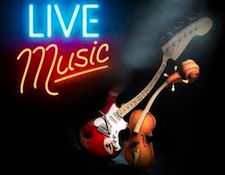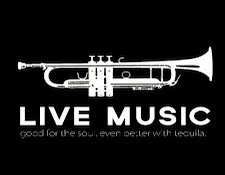It’s the time of year for saving money!

I and a couple of Hi-Fi Crazy friends were talking, recently, about what a good audio system ought to sound like, and, just like always and just like everybody else, we came to the not-too- surprising conclusion that it ought to sound like “live” music. The problem, though, was that it’s getting more and more difficult to find any truly “live” music to compare it to.
You don’t think so? Is there any PUBLIC place anywhere that you can think of that you can go to and hear absolutely natural, completely unamplified music? I DON’T mean Bill’s back yard, where he might play guitar while Shirley sings, and I don’t even mean things like the old Griffith Park Sunday afternoon “Love-Ins” of California’s 1960s and ’70s, where a herd of guys might get together and rhythmically and joyously bang on conga drums, bongos, trash cans, benches, and almost anything else that might make good percussive noise while everybody else sang “Kumbaya”. Those are both certainly “live” and unamplified, but we were talking about “comparison”, and ― unless you make (or made) them yourself ― you’re never likely to find recordings of that kind of music, played in that kind of venue, from that kind of sonic perspective to compare anything with.
The fact is that, necessary or not, just about everything is amplified. It may just be that the girl singer with the jazz group has a microphone so that her voice can be heard over the (very much louder) sound of the other performers. Or that the church choir is amplified just a little in order to be heard throughout the entire hall. Or that just being heard is not enough ― the rock group performing wants to be mind-destroyingly loud as part of its musical persona and the creation of a greater total experience. It might even be (speaking of “personas”) that performing into a microphone can (or at least can be hoped to) transform the player ― who might be heard perfectly well, anyway ― from just some guy on a stage, into a “performer”, the center of attention, and the microphone is there largely for moral support.

Even the Hollywood Bowl, which one of us mentioned as a still-available source of live music, isn’t really live anymore: It’s just the world’s biggest Hi-Fi set. That may not always have been the case; back in 1921 or ’22 (the records say both) when the Hollywood Bowl had its first season, it may have been that the now-familiar half-dome (“bowl”) shape of the backdrop and the natural amphitheater of its hillside setting were sufficient to enable a smaller and more-closely-seated audience to hear the performers without amplification, but things have changed since then. Now, seating extends all the way up the hill facing the “bowl”, and, in addition to the two giant horn speaker systems flanking the stage and more on top of the bowl, itself, additional speakers are arrayed on both sides of the seating areas, extending all the way up the hill. and time-delayed by the equivalent of the speed of sound, so that “original” sound from the stage and the reinforcing sound from the speakers will reach the ears of listeners at any point on the hillside at, as-nearly-as-possible, the same time.
Granted, that’s a brilliant solution to a fiendishly difficult problem, and granted, too, that the sound reinforcement is very well-done and seems very natural, but the fact remains that even very good amplified sound is still amplified sound, and even a very big Hi-Fi set is still a Hi-Fi set and NOT natural sound.

So why does that matter? Well, if we, for whatever reason unaware of its actuality, were to use the sound we heard at the Hollywood Bowl, or at a rock concert, or in church, or in any other place that we might mistakenly think of as “live” music as the standard for what our ideal Hi-Fi system ought to sound like, even if we were to achieve a quality of sound that we thought matched it perfectly, that “perfect” match might not sound anything at all like the natural, unamplified sound that we all agreed was our ideal.
It reminds me of an old joke:
A young bride tried her very best to show her love for her husband by cooking all of his favorite dishes. Try as she might, though, she could tell that, even despite his compliments, he still thought his mother’s cooking was better.
Undeterred, the young bride kept trying, doing all she could – even getting all of her mother-in-law’s recipes and following them in fanatic detail – in order to win her husband’s favor, but, although she sometimes came close, she could always tell that, to her husband’s tastes, his mother’s cooking was still the best.
Finally, one night, after a horrible day of one thing after another going wrong, the worst thing possible happened – she burned her husband’s dinner, and, having no time to make another, was forced to serve it to him anyway.
With great trepidation, she dished it up, trying to hide the burnt parts and make it as attractive as possible. Then she gingerly set it before her husband who, catching his first whiff of it, sniffed, looked at it a little oddly, looked at her, turned back to his plate, took a first bite, slowly chewed it and then said…
“Wonderful! Just like Mother used to make!”
The same thing applies to Hi-Fi: If you don’t have a realistic standard of perfection, even if you get it right, you won’t get it right!
And that’s why we need real, natural, completely unamplified sound as a reference standard. And that is getting increasingly hard to find.





